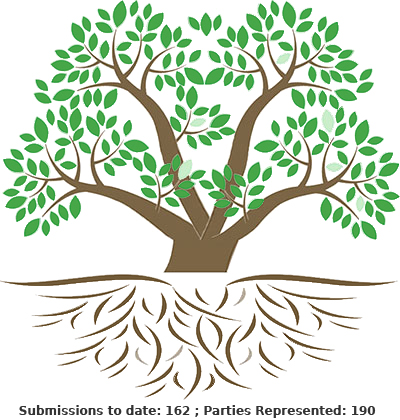We are now heading towards the end of the COP21 climate change negotiations in Paris. However, I thought this is still a good time to bring up the issue of water and climate change. Water is a key medium through which we feel the impacts of climate change but also a key driver through carbon emissions from treatment, use and disposal.
In 2014 I worked with several countries including Azerbaijan to consider water sector emissions in their Intended Nationally Determined Contributions (INDCs). These were designed by the UNFCCC to encourage countries to consider their domestic mitigation and adaptation measures and communicate these ahead of the conference (the figure below from the UNFCC portal show the progress of submissions to date).
This post outlines case-studies on water and climate change and provides a link to a work in progress document collating water sector actions in submitted INDCs.
 |
| INDC Submissions to date |
Water sector INDCs - Azerbaijan Case Study
I was invited by the European Commission funded ClimaEast project to present at a National Workshop on Water-related Policies and Measures as part of Intended Nationally Determined Contributions. In my presentation I covered:
- Water sector energy use and carbon emissions
- UK research identifying 90% of emissions from water supply, use and disposal are related to heating hot water in the home
- UK research identifying that demand management options can have lower carbon costs than large centralised supply options
- Australian example - heating hot water in the home accounts for 8% of Australia's GHG emissions, 13% of electricity use, and 18% of natural gas use
- Case studies - South East Water; joint water and energy efficiency programes; Water Sensitive Urban Design
- Irrigation and agriculture dominate water use in Azerbaijan, however water recycling is increasing. The carbon emissions from this sector needed further assessment.
Review of INDCs and Water
The UNFCCC has published the INDCs submitted by each country. I've been updating a google doc with water sector actions. The aim is to collate this information for further review and it can input into projects such as the International Water Associations Water and Climate Change WACCLIM initiative for utilities and how this links to city, national and international climate change agendas.
Some of the key messages on water in INDCs include:
Please contact me if you have any suggestions for this or are interesting in helping collate and assess water related INDC contributions.
Some of the key messages on water in INDCs include:
Developing the Ministry of Water and Irrigation’s (MWI) Energy Efficiency and Renewable Energy Policy for the Jordanian Water Sector (2015) starting with utilization of sludge and other biosolids to generate energy, which is one of several projects announced under the policy, which seeks to achieve a 15 % reduction in energy consumption of billed water by the year 2025 through the introduction of economically feasible and environment-friendly power generation systems based on renewable energy sources. Introducing renewable energy as a source to supply water systems. (Jordan)
Water resource management tools, which include climate change and variability considerations, will be in place for the country’s priority water basins (Columbia)
The initial costing of implementing the green growth and climate resilience strategy indicated that Rwanda will need 24.15 Billion USD in the sector of Water resource management, Agriculture and Energy up to 2030 (Rwanda)
Singapore has developed a robust, diversified water supply system through “The Four National Taps”: namely, local catchment water, imported water, NEWater7 and desalinated water. Since 2011, with the completion of three reservoirs in urbanised areas, the total water catchment area has been increased from half to two-thirds of Singapore’s land surface. (Singapore)
Guarantee the integral management of water for its different uses (agriculture, ecological, urban, industrial and domestic). (Mexico)
Tonga’s current reliance on imported oil for its development needs, which supplies all transport fuel, much of the energy for water pumping. The Government also aims to replace all diesel-based water pumping engines by 2017 using solar power. (Tonga)
Please contact me if you have any suggestions for this or are interesting in helping collate and assess water related INDC contributions.
 |
| Working together to identify climate change vulnerabilities (Bursa, Turkey) |





No comments:
Post a Comment